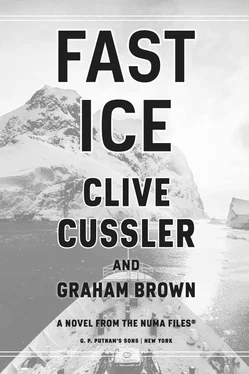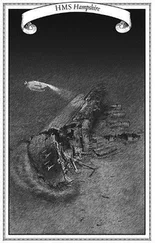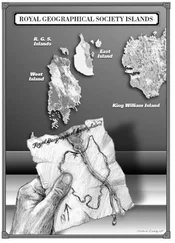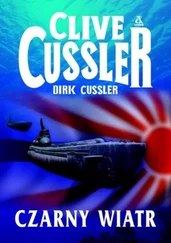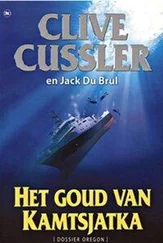“Or the beginnings of a Jackson Pollock painting,” Joe said.
To Kurt, it looked more like an arrangement of stars—a few here, a few there. With a bit of imagination, he could have connected the dots and made his own constellations. To the computer, it was like a punch card from the 1950s. And it contained information that could be used to access the database of printer manufacturers.
With an electronic chirp, the answer appeared on the screen.
Joe leaned close and read it aloud. “Laser Jet Pro,” he said. “Euroline PLC Model 9117, serial number 783-692 D-19.”
“We’re seeing that, too,” Yaeger announced over the phone. “Stand by while we try to get a fix on where the Euroline printer with that serial number might be located.”
“This all seems a little far-fetched to me,” Leandra said.
Kurt thought so, too, until he considered that most modern printers were connected to the internet and that everything on the internet used IP addresses and “handshakes” and other technical ways of identifying itself to every other bit of electronic machinery on the network. For whatever it was worth, Hiram seemed to think it would be a slam dunk.
It didn’t take long for him to be proven correct. “Here’s your answer,” he told them. “This page was printed at the Berlin Document Center in Germany.”
“Please tell us that’s not a FedEx or Kinko’s or random internet café,” Kurt said.
“Not at all,” Hiram said. “In fact, it’s exactly what we’ve been looking for.”
30
BERLIN
Paul and Gamay arrived in Berlin, finding it warmer and wetter than Finland but just as gloomy. The overcast sky was heavy and low. A spitting rain drifted in the air like mist.
“I’m sure we’ll see the sun again,” Paul mused. “One of these days.”
“Not anytime soon,” Gamay said. “By the description Rudi gave, we’ll be going underground soon.”
Traveling by car, they crossed Berlin, passing the Brandenburg Gate and then the famous Reichstag, which housed the German parliament before World War II, only to be abandoned and left to rot until the reunification of East and West Germany.
The Reichstag was an impressive structure, old in style and designed with unrepentant grandeur but updated with modern touches, including a glass-domed roof that was lit boldly at night.
Berlin was filled with many such buildings, along with plenty of modern architectural wonders offering eye-pleasing lines. The Berlin Document Center was not one of them.
As they pulled onto the property, Paul summed it up succinctly. “This is a depressing-looking place.”
“It was once the secret headquarters of Hermann Göring and the SS,” Gamay replied. “Surely you weren’t expecting rainbows and unicorns.”
The name itself was part of the problem. Calling it the Berlin Document Center conjured up images of a modern government building, something big and square, with glass walls and open plazas. But the BDC was made up of smaller buildings constructed in the 1940s. The structures aboveground had once accommodated loyal SS members, while the bunkers down below served as a domestic spying operation in which hundreds of trained eavesdroppers tapped phone lines throughout the city. Nearby lay barracks that had once housed squads of vicious commandos and brutal interrogators waiting for their next victim.
In stark contrast to the drab site, Paul and Gamay were greeted by a stylish woman named Andrea Bauer. She was attractive but stern, wearing rimless glasses and a navy blue pantsuit. Ms. Bauer was the lead historian at the center.
“Guten Morgen,” Gamay said. “Vielen Dank, dass Sie uns so kurzfristig getroffen haben.” She’d been learning German for several months and was attempting to say Good morning. Thank you for meeting us on such short notice.
“You’re most welcome,” Ms. Bauer replied. Her accented English was better than Gamay’s attempt at German. “Your office in Washington alerted me to your needs. We have everything prepared. Please come this way.”
They followed her past the small buildings and through a heavy iron gate to a larger concrete structure. On the far side, they took a stairway down to one of the bunkers.
After passing through a bombproof door installed in 1943, they emerged into a large open room. What had once been the heart of the wiretapping operation now was a research center. Staff members stood at tables around the room, busily working on various documents.
Ms. Bauer explained. “Millions of files from the Nazi Party were recovered after the war. And millions more have been rounded up over the past fifty years. They have been meticulously stored and catalogued here. A microfilm record was made in 1994, but microfilm has been proven to be inadequate to capture all the details of the files, like colors or faded notations. Nor does the film last forever. As a result, we are in the process of making a new and more detailed record with high-definition cameras.”
Gamay had a feeling she’d given that speech before.
Speech completed, Ms. Bauer led them through the main room and into a smaller, secondary annex. Modern lighting, sleek office furniture and new computers resting on clean desks helped brighten appearances, but the heavy architecture remained. The walls were unadorned concrete, solid steel doors with exposed hinges hung at the far end of the room. A row of cast iron safes lined the wall.
“What are those for?” Gamay asked.
“We don’t use them anymore,” Ms. Bauer said. “They once held the personnel files of high-ranking Nazi leaders. In truth, they’re too heavy to move. But we also have no desire to forget what this place was truly used for.”
Paul and Gamay took a moment to appreciate where they were. Paul imagined the treachery that had been plotted in these rooms, the terror once devised there. Gamay felt the darkness of the place. Yet also a sense of triumph, that the Allies vanquished the Nazis and rebuilt a society in which the truth had not been wiped away and hidden.
Ms. Bauer seemed to read her mind. “When the Allies swarmed in, the Nazis were already in the act of destroying what they could, but they’d waited too long and had wildly underestimated the task. The German war machine had kept such vast and meticulous records that the truth could not be burned or destroyed even with several days’ notice to get the job done. That attention to detail convicted many of the gestapo and SS murderers during the postwar trials.”
“We’re looking for something earlier than that,” Paul mentioned. “And far less violent or controversial.”
“Yes,” Ms. Bauer replied. “The files Ms. Emmerson viewed. They have been pulled and collated for you there.”
Gamay turned to see two small stacks of paper, each about a foot high. Many folders and documents were covered in protective plastic, others were not.
“We may need help with the translations,” Gamay said. “I’ve learned some German, but not enough to read through pages of text at any sort of speed.”
“You won’t need any help at all,” Ms. Bauer promised. “At least, not human help. The terminals are equipped with instant scan translators. You place the paper under the scanner and a virtual document is created. Using the keyboard, you can get an instantaneous translation into any language you wish. All we ask is that you use the gloves while handling the files.”
She pointed to a box of white gloves that would keep the oil on their fingers from damaging the documents.
Paul slid on a pair of gloves and plucked the first sheet of paper from the stack. It was a Hamburg weather report, circa 1938. Placing it under the scanner and looking at the screen, he saw a perfectly reproduced image. Tapping on the keyboard, he found a menu. He clicked on the tab marked with the English flag.
Читать дальше
